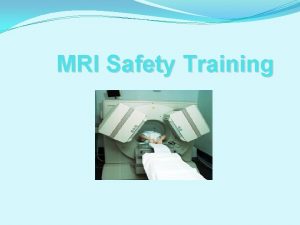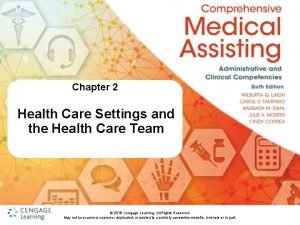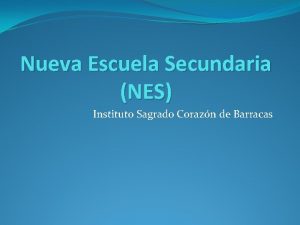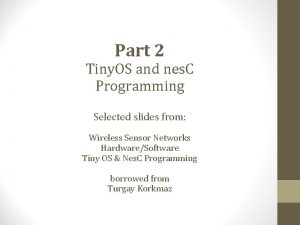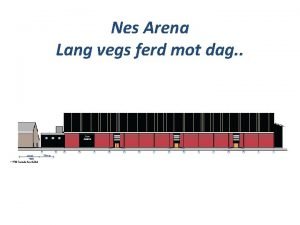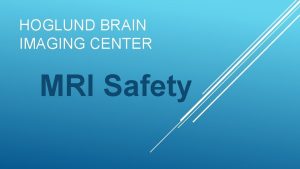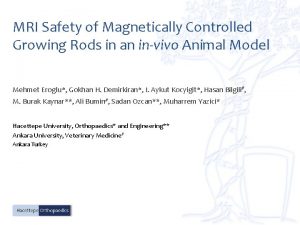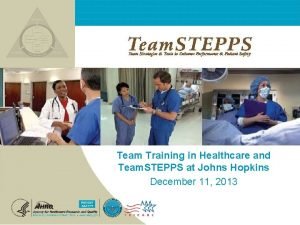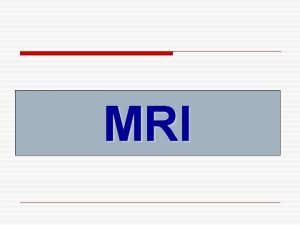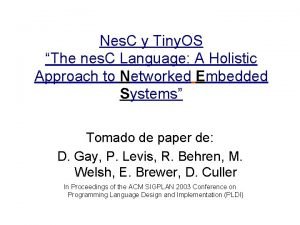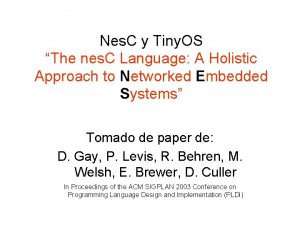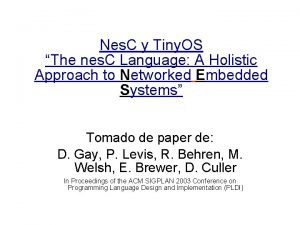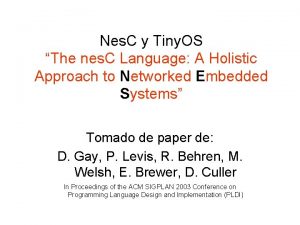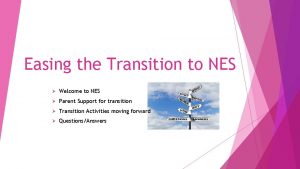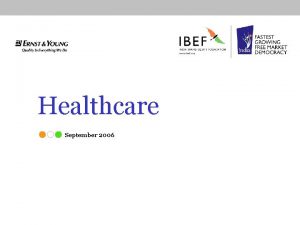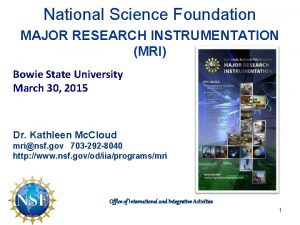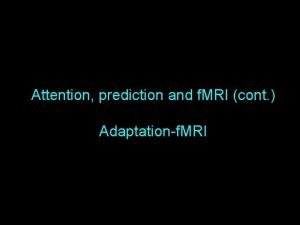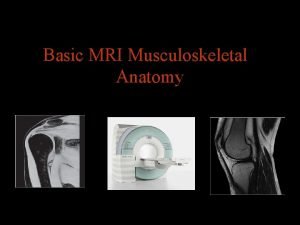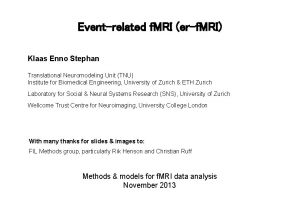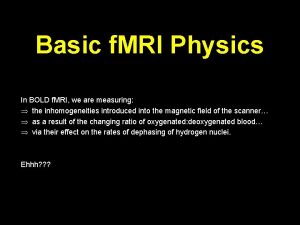NES Healthcare Science MRI Safety Training for Major

























































- Slides: 57

NES Healthcare Science: MRI Safety Training for Major Trauma Centre patients at QEUH MRI Physics Group & Jacqueline Pursey, MRI Practice Educator NHS GG&C

Opening statement: MRI Safety • MRI Units have the potential to be one of the most dangerous places in the hospital • People have been killed in MRI units and there are many cases of severe injuries occurring • However, incidents are very rare because of MR safety training and safe working practices • It is possible to work safely in the MRI Magnet room • The magnetic field and other dangers due the MRI scanner must be understood and respected

Contents • Safety Guidance and Training requirements • MRI safety zones and QEUH layout • Equipment labelling • Risks associated with MRI Scanners • Unit safety including emergency procedures • Risks to patients with implants • QEUH equipment considerations • The MR Pause • Advice on scanning pregnant patients • Incident reporting

• MRI safety guidance and training requirements

Aims and Objectives • This resource aims to: • Ensure you are aware of the risks when working in a MRI unit • Ensure you are aware of your permissions and responsibilities as Category B staff • Direct you to additional resources for further reading/discussion

Learning outcomes • After competing this module you should be able to: • Describe the main hazards surrounding MRI • Understand your role in MRI Safety • Work safely in an MRI unit • Know where to access further information, particularly information specific to your site

Guidance • MHRA guidelines for safe use of clinical MRI • Discusses risks of MRI • Advice and best practice • Categories of staff • Training requirements for staff Source: MHRA

What does Category B mean? • MHRA guidelines define Category B as: “Personnel who do not fall into category (A) but are present with a volunteer or patient during scanning such as radiologists, anaesthetists and nurses. ” • Effectively, Category B staff can access all areas of the MRI Controlled Access Area unsupervised but do not operate the MRI scanner. • This is reflected in the training requirements. . .

Local rules • All Category A and B staff are required to read and sign the local rules • Local rules include information on emergency procedures • Ask your MRRP, Designated Person or MRI Clinical Scientist if you have any questions

Training requirements Source: MHRA

GA and MRI • Safe Provision of anaesthesia in MRI, 2019 • Prepared by: Association of Anaesthetists • Neuro Anaesthesia and Critical Care Society of Great Britain and Ireland

• MRI safety zones and QEUH MRI layout

MRI zones (From MHRA) • Controlled Access Area (CAA): Unsupervised access must be restricted to trained and approved staff • CAA layout highlighting magnetic field lines should be displayed in your control room and in your local rules • Magnet Room or MR environment: Typically contains the 5 Gauss line, only Cat A or B can enter unsupervised • 5 Gauss is the magnetic field strength that may affect a medical device e. g. a pacemaker Source: MHRA

QEUH MRI layout MRI, CAA entrance The two rooms outlined in red are each known as a ‘Magnet room’. The dangerous magnetic field is present throughout this entire area.

QEUH Controlled Access Area (CAA) • Entrance to CAA • Only MR trained staff can work unsupervised beyond this point • Staff and patients must complete MR safety checklist completed prior to entering

Patient and staff safety • MRI safety checklist • Staff updated annually • Inform MR lead to relevant changes to your medical history • Category A staff are responsible for completion of MRI safety checklist with patients

The Magnet Room • Magnetic field is a major risk beyond this point • Only MR safe/ MR conditional items beyond this point • MR Conditional? • Know the conditions • No MR unsafe objects beyond this point • No label means you should assume MR unsafe

The Projectile Zone • An oval area within Magnet room denoted by red line on floor • Keep patient monitoring equipment outside this zone

The MR preparation ‘prep’ Room • MR prep room • Monitoring equipment stored here • For MTC patients, perform ‘MRI Pause’ before leaving prep room • In event of patient cardiac arrest patient removed from magnet room to here

• MRI equipment labelling

Labelling equipment • • • MRI Safe: can be taken into the Magnet room MRI Conditional items: you must follow the conditions of use MRI Unsafe: do not take into Magnet room Unlabelled? Assume MRI Unsafe, speak to radiography staff Ensure you are safe to enter the Magnet room each time you enter Source: MHRA

• Risks of MRI

Risks of MRI The risks of MRI are derived from 3 different components of the MRI hardware • The Static magnetic field • The RF power • The Imaging Gradients

• Risks of the static magnetic field

Static Magnetic Field Always on Silent Invisible Is a risk from the Magnet Room entrance Strong pull and rotational forces on ferrous objects • May cause vertigo and/or nausea • • •

Static Magnetic Field Incidents • 2001, 6 year old boy was killed during an MRI examination • MRI Unsafe Oxygen tank introduced to Magnet Room by staff • Tank flew to centre of magnet and struck patient

Static Magnetic Field Incidents • In 2014, two employees suffered injuries after an oxygen cylinder was brought into the Magnet Room • MRI “projectile” incidents have the potential for serious injury or death • Other previous projectile incidents have involved scissors, drip stands and hair clips being brought into the Magnet Room Credit: Central European News

Turning off the static magnetic field - non emergency • The static magnetic field can also be removed by the process of a ‘controlled ramp down’ • Less expensive and damaging to the scanner than quench • Performed by service engineers • Used when decommissioning magnet or when large ferrous object stuck to scanner Floor polisher sucked into scanner. Ramp down (not quench) to be done in situations like these

Static Magnetic Field Incidents from patient implants/retained metal: • Intracranial aneurysm clip: 2 patient’s have died • Dislodgement of an iron filing in a patient's eye during MR imaging resulted in vision loss in that eye

• Risks of the RF power

RF power • Pulses of RF power are transmitted into the body in order to get MR images • Unwanted interactions with medical devices • Burns can occur in MRI under a number of circumstances: • • Skin to skin contact Skin to magnet bore contact Inappropriate use of monitoring equipment Interactions with implants, cosmetics, tattoos or skin patches

RF power • Patients can receive burns even with no implant, rare but can occur • Appropriate patient positioning and use of pads minimises risk • Appropriate choice of operating mode of the scanner limits this risk (e. g. Normal Mode has lower risk of burns compared with First Level Mode) Source: Siemens Healthineers and GE Healthcare

RF power Credit: Knopp et al, Radiology (1996) & Muriel Cockburn, NHS Highland

MR safety of patient devices and monitoring equipment • A major risk of RF power is the risk of heating and burns from MRI unsafe devices or equipment. • The checking for hidden items on trolleys and wheelchairs prior to entering the magnet can be used to detect MRI Unsafe equipment. • Ensure any monitoring equipment taken into the magnet room is MRI Conditional or MR Safe. • Cables from monitoring equipment should not be in contact with patient skin. • Cables should be fed straight out via the centre of the bore of the magnet.

Example of pulse oximeter related burn • In 2007, MRI Unsafe pulse oximeter was left attached to 5 -week-old baby during MRI scan. Cable may have been looped or under clothing. • Baby sedated (to prevent movement) • Presumably, probe not spotted when baby brought down to the MRI unit. • Trolley checks essential • Baby received fourth-degree burn to arm, resulting in amputation.

RF power • Risk occurs when scanner is acquiring images • Responsible for heating to patient and devices • Scanner limits the heating to a patient by using their height and weight • RF power may also cause unwanted device interactions

• Risks of the time varying imaging gradients

Time varying gradients • • • Gradients are used to localise the signals that are used to form the MR images. Risk occurs when scanner is acquiring images Peripheral Nerve Stimulation (PNS) Heating and unwanted interactions with medical devices Appropriate choice of operating mode of the scanner limits this risk (e. g. Normal Mode has lower risk of PNS compared with First Level Mode) Responsible for acoustic noise

Time varying gradients • Acoustic noise • Patients must have protection • Other persons in the magnet room during scanning must also wear protection

• QEUH equipment considerations

Equipment considerations : general • MR unsafe objects must not be taken into the Magnet room • Any drawers or storage compartments on any pieces of equipment to be kept empty • Do not mix components from different pieces of equipment • Equipment labelled as MR conditional • Know and follow the conditions

QEUH equipment considerations • Bbraun Spacestation for infusion pumps • MR Safety conditions • Keep outside projectile zone • Note that pumps are ferrous so ensure clipped into place properly • Door to pump enclosure must remain closed during scanning • Do no change pumps in the magnet room, only change in prep room

QEUH equipment considerations • Phillips/Invivo Expression 400 patient monitor • MR Safety conditions • Keep outside projectile zone • Ensure 3 rd party consumables are also MR safe or conditional e. g. ECG pads • Incorrect ECG pads can lead to patient burns

QEUH equipment considerations • Hamilton Ventilator MR Safety conditions • MR conditional up to 50 m. T • Keep outside projectile zone

• The MRI Pause

The ‘MR Pause’ • a safety feature to ensure everyone and everything entering the magnet room is safe for the magnet room • occurs prior to the patient leaving the prep room to enter the magnet room • Everyone present stops to do this

The ‘MR Pause’ • Check the following for MR unsafe objects • Yourself (everything out of pockets, no jewellery or fitness equipment (i. e. ankle weights or weighted vests are MR unsafe)) • The patient, including their hair and their clothes • Any patient ancillary equipment: e. g. supports / splints / vacuum bags • The trolley, pillows and under bedding • • Only MR safe/MR conditional equipment connected to patient Ensure correct patient positioning Patient must have ear protection in place Record that MR Pause was done on patient record system e. g. CRIS/Opera

• Emergency procedures

Emergency Procedure: Fire in the MRI Unit • Know the locations of MRI-safe fire extinguishers • Ensure the type of fire extinguisher is appropriate for the type of fire • Know and rehearse your emergency patient extraction procedures • Know the location of and when to use the quench and electrical isolation buttons in the event of a fire

Emergency Procedure: Electrical isolation • Electrical isolation button- used to cease electrical power to MR scanner (including equipment in technical room) • To be used in the event of flood, fire or electrical fault • Know the location of these buttons in your unit Source: IPEM

Emergency Procedure: Turning off the static magnetic field - ‘Quenching’ • Quenching the magnet turns the magnet off • Know the location of these buttons in your unit • This must only be done in an emergency: • Person in grave danger due to being trapped by large metallic object. • Significant fire in scan room or adjacent rooms

Emergency Procedure: Quench buttons CAN TAKE BETWEEN 30 SECS TO 2 MINUTES FOR MAGNETIC FIELD TO TURN OFF Source: IPEM

• Closing comments

MRI: report near misses and adverse incidents • Incidents are rare • Report MRI safety issues in a timely manner • Most common incidents are due to unsafe objects being taken into the magnet room and also heating and burns • Report through incident reporting system (e. g. Datix / IR 1 safeguard) • Discuss with MRRP and MRSE whether reporting to MHRA via Yellow Card system appropriate

Advice on patient pregnancy and MRI • Patients who are pregnant can be scanned in ‘Normal operating mode’ • Heating and acoustic levels should be minimised wherever possible • No distinction regarding trimester • Gadolinium based contrast agents and 1 st level scanning mode not recommended during pregnancy and require risk : benefit consideration

Further guidance for staff • Pregnant staff • Do not remain in magnet room during scanning • Anything else – ask the MR radiographer

MRI Safety (recap): Your responsibilities • Ensure you are safe to enter the Magnet Room • Assist in ensuring anyone taken into the Magnet Room is safe for MRI (e. g. safety checklist approved by Radiographer, no MR Unsafe objects on their person) • Ensure anything you take into the room is MR Safe or MR Conditional (i. e. appropriately labelled) • If MR Conditional, follow the conditions • Otherwise assume item is MRI Unsafe • Seek advice from Radiographer • Be vigilant and challenge anyone you suspect of unsafe practices
 Mri safety training
Mri safety training Healthcare and the healthcare team chapter 2
Healthcare and the healthcare team chapter 2 Healthcare and the healthcare team chapter 2
Healthcare and the healthcare team chapter 2 Nes serbia
Nes serbia Instituto nes
Instituto nes Nes c programming
Nes c programming Kentaur nes
Kentaur nes Police academy nes
Police academy nes Nes ge
Nes ge Nes arena treningssenter
Nes arena treningssenter Usf nes building
Usf nes building Lyric hearing aid mri safety
Lyric hearing aid mri safety Atriclip mri safety
Atriclip mri safety Mri safety signage
Mri safety signage Mri safety
Mri safety Cmrr mri
Cmrr mri Vector express medtronic
Vector express medtronic Safety care behavioral safety training
Safety care behavioral safety training What is a witches favourite subject in school
What is a witches favourite subject in school Stepps healthcare
Stepps healthcare Healthcare administration in athletic training
Healthcare administration in athletic training Healthcare science technology
Healthcare science technology Kontinuitetshantering
Kontinuitetshantering Typiska novell drag
Typiska novell drag Tack för att ni lyssnade bild
Tack för att ni lyssnade bild Ekologiskt fotavtryck
Ekologiskt fotavtryck Varför kallas perioden 1918-1939 för mellankrigstiden?
Varför kallas perioden 1918-1939 för mellankrigstiden? En lathund för arbete med kontinuitetshantering
En lathund för arbete med kontinuitetshantering Personalliggare bygg undantag
Personalliggare bygg undantag Tidböcker
Tidböcker A gastrica
A gastrica Vad är densitet
Vad är densitet Datorkunskap för nybörjare
Datorkunskap för nybörjare Boverket ka
Boverket ka Mall debattartikel
Mall debattartikel Magnetsjukhus
Magnetsjukhus Nyckelkompetenser för livslångt lärande
Nyckelkompetenser för livslångt lärande Påbyggnader för flakfordon
Påbyggnader för flakfordon Vätsketryck formel
Vätsketryck formel Svenskt ramverk för digital samverkan
Svenskt ramverk för digital samverkan Bo bergman jag fryser om dina händer
Bo bergman jag fryser om dina händer Presentera för publik crossboss
Presentera för publik crossboss Vad är ett minoritetsspråk
Vad är ett minoritetsspråk Kanaans land
Kanaans land Klassificeringsstruktur för kommunala verksamheter
Klassificeringsstruktur för kommunala verksamheter Fimbrietratt
Fimbrietratt Bästa kameran för astrofoto
Bästa kameran för astrofoto Centrum för kunskap och säkerhet
Centrum för kunskap och säkerhet Programskede byggprocessen
Programskede byggprocessen Mat för idrottare
Mat för idrottare Verktyg för automatisering av utbetalningar
Verktyg för automatisering av utbetalningar Rutin för avvikelsehantering
Rutin för avvikelsehantering Smärtskolan kunskap för livet
Smärtskolan kunskap för livet Ministerstyre för och nackdelar
Ministerstyre för och nackdelar Tack för att ni har lyssnat
Tack för att ni har lyssnat Mall för referat
Mall för referat Redogör för vad psykologi är
Redogör för vad psykologi är Borstål, egenskaper
Borstål, egenskaper
